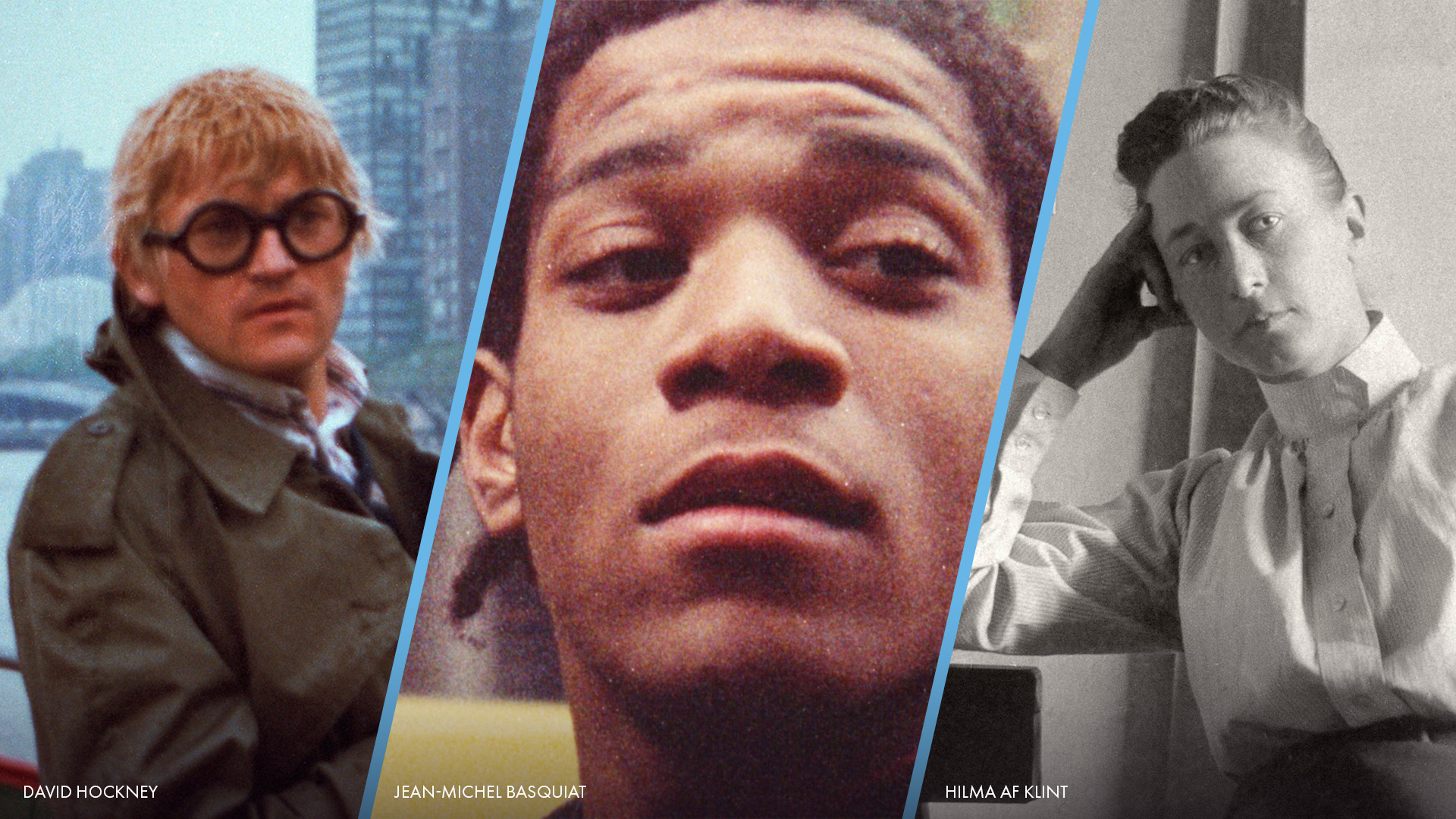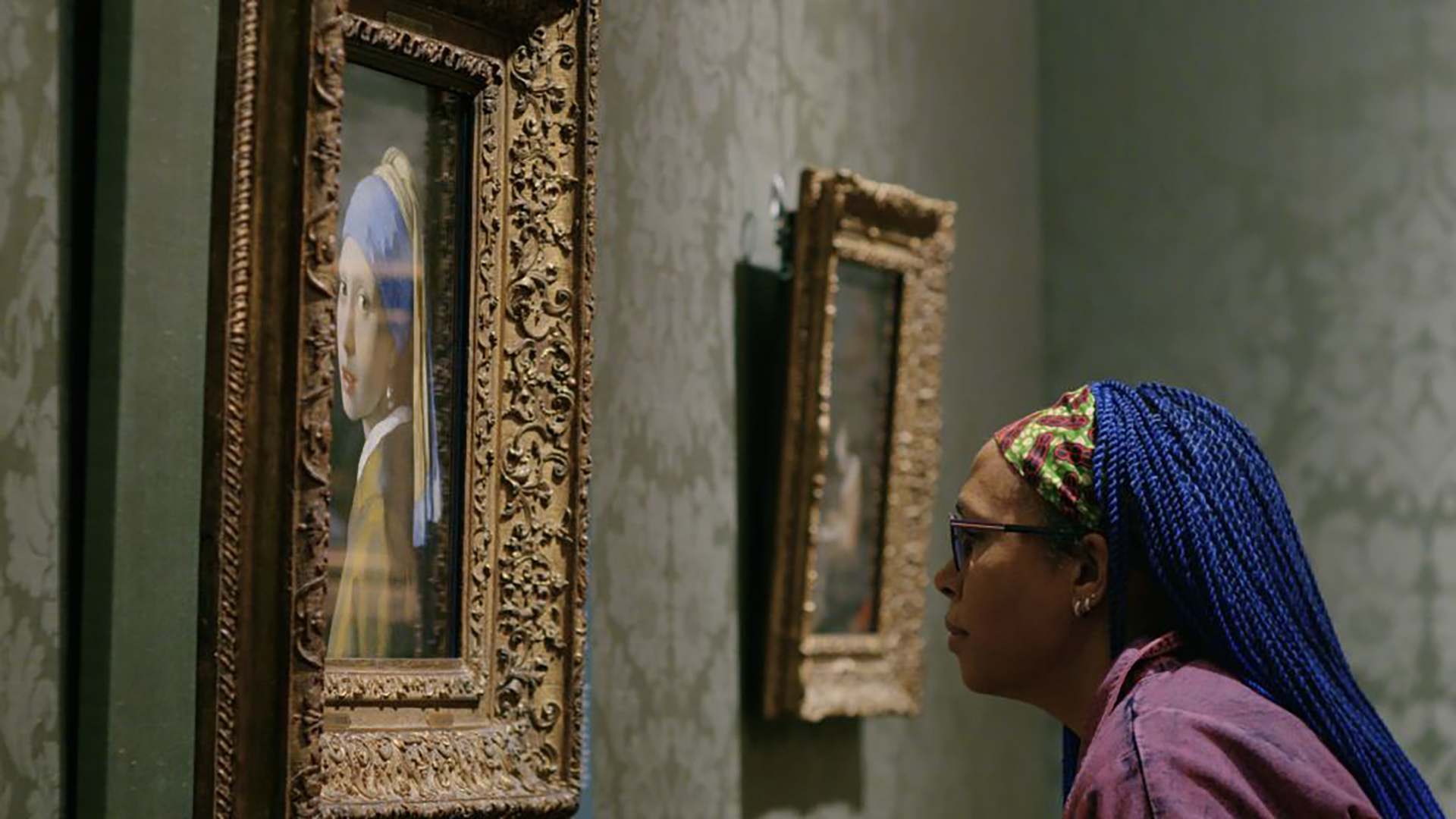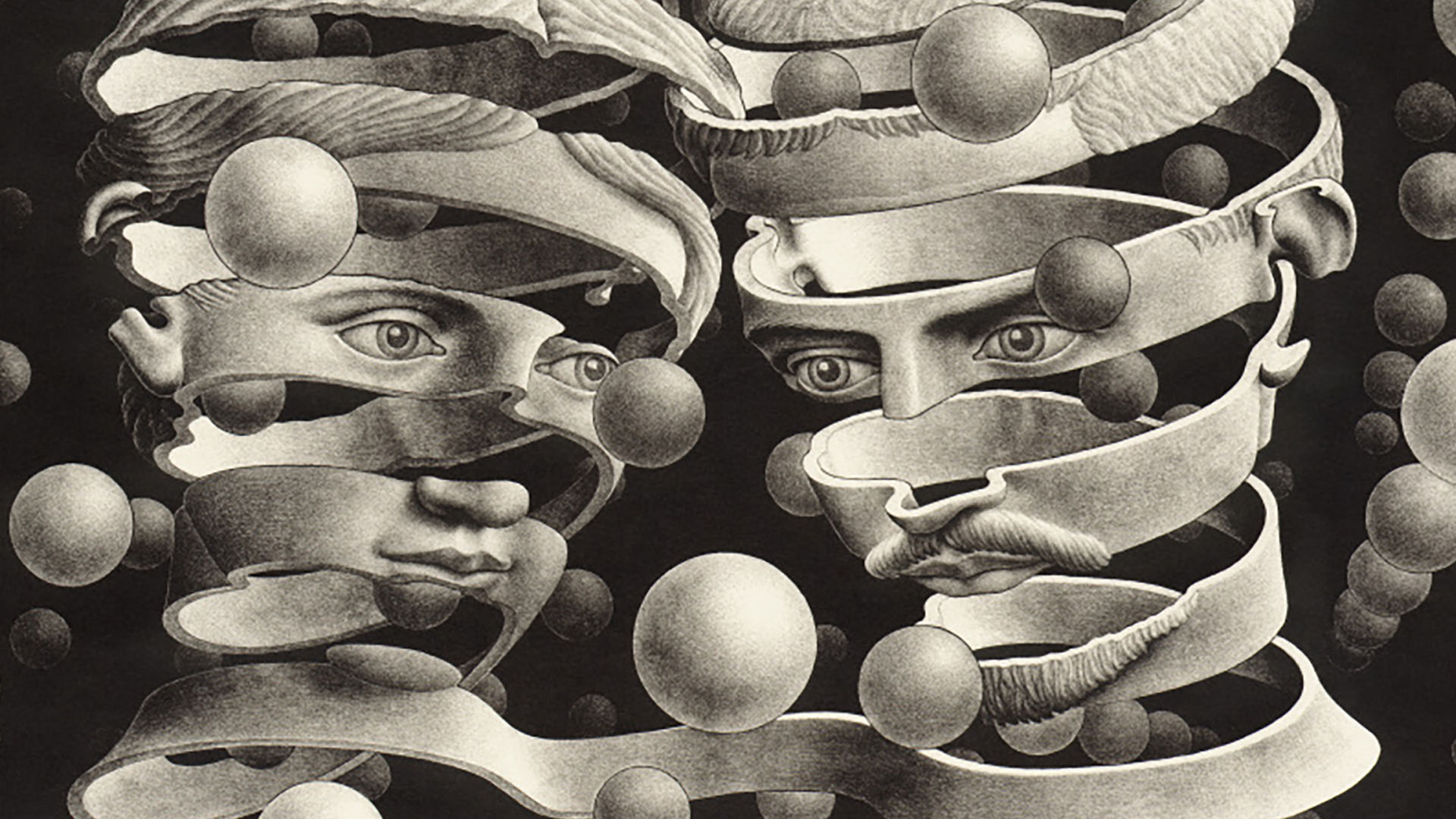
Art School Is Expensive. Watch These Art Documentaries For a Thorough Crash Course.

The history of art is mind-bogglingly expansive. In every era, there have been visionaries, geniuses, and madmen ahead of their time who eviscerated boundaries and redefined what art is. Kino Film Collection is home to a wide array of documentaries chronicling some of history’s boldest and brightest artists, including the newly released Hieronymus Bosch: Touched by the Devil. Female trailblazers who deserve to be known, a self-taught artist who brought African-American history to life through art, and the inner workings of the contemporary art market—these are some of the subjects featured in our highlighted collection of art documentaries. Each one is like a chapter in the ultimate art history syllabus. You can stream all 12 titles, and more art documentaries, on Kino Film Collection now.

Hieronymus Bosch: Touched by the Devil (2016)
Hieronymus Bosch: c. 1450 - 1516
Half a millennium later and there is still no artist that compares to Hieronymus Bosch. His intricate and elaborate depictions of hellish landscapes and inconceivable creatures would shock the most provocative horror masters of today. In 2016, in conjunction with the 500th anniversary of his death, the Noordbrabants Museum in the Dutch city of ’s-Hertogenbosch (Bosch’s hometown) held an exhibition celebrating the painter’s work. Pieter van Huystee’s documentary Hieronymus Bosch: Touched by the Devil follows a team of art historians who travel the world to dissect Bosch’s works, at times with surgical precision, to authenticate them in preparation for the exhibition. Through their analysis, the audience gets an intimate, close-up look at Bosch’s spellbinding paintings and therefore a glimpse into his mind. Viewers might come away wondering, “In order to create such unimaginably nightmarish images, was Bosch indeed possessed by something otherworldly?”

Close to Vermeer
Johannes Vermeer: 1632-1675
Though he was nowhere near as prolific as his contemporaries of the Dutch Golden Age, Johannes Vermeer is indisputably one of the most important Dutch painters in history. That’s largely due to one painting, Girl With a Pearl Earring, which is one of those rare paintings that has permeated popular culture and has become a shorthand for “classical painting.” Suzanne Raes's documentary Close to Vermeer both zooms out from Vermeer’s most famous work to provide a comprehensive look at the artist’s oeuvre and legacy and zooms in—way, way in—to examine the artistic and technical minutiae that make a Vermeer a Vermeer vs an imposter. The film follows curators, conservators, collectors, and experts as they prepare for the largest Vermeer exhibition ever mounted, at the Rijksmuseum in Amsterdam in 2023. While it’s an eye-opening look at how an exhibition of this magnitude is put together, the real heartbeat of the film is the emotional and visceral impact Vermeer has on people nearly four centuries later. One scene demonstrates this impact perfectly: When recounting the first time he ever saw a Vermeer with his own eyes, curator George Weber says, “I fainted.”

Beyond the Visible – Hilma af Klint (2019)
Hilma af Klint: 1862 - 1944
When one thinks of abstract modern art, names like Wassily Kandinsky, Piet Mondrian, and Jackson Pollock might come to mind. Halina Dyrschka’s Beyond the Visible – Hilma af Klint shreds this male-dominated claim to the art movement to pieces. Because it is the titular subject of her documentary who in fact invented abstract art, years before her male contemporaries. Dyrschka goes one step further by speculating that those same male contemporaries went so far as to copy Klint’s work. Dyrschka’s film showcases in all their glory Klint’s remarkably original abstract paintings, influenced by nature, geometry, and theosophy, and in one sequence places them side by side with works by Kandinsky, Mondrian, and even Andy Warhol. The similarities are indisputable, and so are the timestamps—Klint preceded these male artists by years, sometimes decades. Yet it is the male artists who ended up in art history books, while her name has been all but forgotten, until recent years. But Dyrschka’s film does more than rewrite history; it corrects it.

Beuys (2018)
Joseph Beuys: 1921 - 1986
A multidisciplinary conceptual artist, a controversial political provocateur, an enigmatic figure of near mystical proportion. German artist Joseph Beuys is all of these things, yet at the same time he eludes interpretation. Andres Veiel’s documentary Beuys is perhaps the most fitting portrait of the artist’s life and work, adopting what The Village Voice called a “refreshingly open-ended approach [that] invites you to find your own answers.” Using archival footage of his work, which ranged from sculpture, performance, installation, and “happenings,” combined with commentary from art critics, historians, and fellow artists, the film goes deeper than a retrospective to dissect the beliefs, ideals, and philosophies that drove Beuys. Always clad in his signature fedora, Beuys set out to reexamine and redefine what art is, and his influence on the art world continues to be felt today.

M.C. Escher: Journey to Infinity (2020)
M.C. Escher: 1898 - 1972
M.C. Escher has become synonymous with “mind-bending.” From labyrinthian staircases that defy gravity to kaleidoscopic prints of morphing animals, the graphic artist is best known for creating optical illusion-like images that dares viewers to solve the impossible. Robin Lutz’s M.C. Escher: Journey to Infinity tells the story of Escher in his own words through diaries, lectures, and letters, narrated in the film by British actor Stephen Fry. The documentary gives us a never-before-seen look at Escher’s life, body of work, and legacy, which includes hommages in film (Suspiria and Labyrinth both include Escher-inspired set design), on posters in college dorms all around the world, and in music—on album covers, in music videos, and in song lyrics. In fact, musician Graham Nash (of Crosby, Stills, & Nash) is a central figure in the documentary, providing commentary on Escher’s rediscovery in the ‘70s. M.C. Escher: Journey to Infinity is part fascinating portrait, part psychedelic trip, and will leave viewers feeling like they may have unlocked something new in Escher’s world of the impossible.

The Price of Everything (2018)
Today, art is a multibillion-dollar industry. It’s nearly impossible to talk about art without talking about commerce. Nathaniel Kahn’s The Price of Everything explores that relationship without shame or judgment, reflecting accurately a market that’s redefined the meaning of “artistic value.” The documentary features contemporary art titans like Jeff Koons, who has unabashedly built a career on highly commodified art fetched at exorbitant prices, painter George Condo, and emerging star Njideka Akunyili Crosby. On the flip side, we get a counter perspective from Larry Poons, who was prominent in the ‘60s and ‘70s but now lives on the outer fringes of the art world in a modest farmhouse in Upstate New York. Other figures in the film include Pulitzer Prize-winning art critic Jerry Saltz, who laments the loss of important works to private collections via the relentless auction cycle, and Sotheby’s chairman Amy Cappellazzo, who matter-of-factly compares museums to cemeteries. For anyone curious about the contemporary art world, The Price of Everything’s multi-angle view is a masterclass.

Downtown 81 (2000)
Jean-Michel Basquiat: 1960 - 1988
Shot in 1980 and 1981, Downtown 81 then halted production for 19 years before finally being released in 2000. As such, it’s a literal time capsule of a bygone New York and the characters that filled it. Edo Bertolglio’s documentary captures a sense of nostalgia truly unique to New York, the kind that romanticizes dilapidated buildings and garbage-strewn streets and turns them into a wonderland of creative energy and whimsy. Downtown 81 follows a young, pre-fame Jean-Michel Basquiat as he wanders the city trying to sell his art, looking for a place to sleep after getting evicted, and running into a slew of mainstays in the late ‘70s, early ‘80s downtown New York art and music scene. The film features appearances by Fab Five Freddy, Arto Lindsay, and Debbie Harry, and musical performances by DNA, James White and the Blacks, and Kid Creole and the Coconuts.
.jpg)
Bill Traylor: Chasing Ghosts (2018)
Bill Traylor: 1853 - 1949
Bill Traylor was born into slavery in 1853 on a cotton plantation in Alabama. Just a boy when the Civil War ended, Traylor would continue to work as a farm laborer for the vast majority of his life. It was not until he was in his late 80s, homeless and living on the streets of Montgomery, that he took up painting and drawing. Between 1939 and 1942, Traylor produced over 1,000 pieces of art depicting his life on the plantation, the rapidly changing urban landscapes around him, and other social and political change he witnessed over a lifetime spanning slavery, Reconstruction, Jim Crow segregation, and the Great Migration. Jeffrey Wolf’s Bill Traylor: Chasing Ghosts tells the remarkable story of one of America’s most profound and prolific self-taught artists, weaving in tap dance, period music, dramatic readings, and interviews from Traylor’s family members. The film serves as an essential archive of a remarkable American figure who’s been called “the greatest artist you’ve never heard of.”

Everybody Knows… Elizabeth Murray (2017)
Elizabeth Murray: 1940 - 2007
Immediately the title might give you pause because, despite gaining recognition in the art world, Elizabeth Murray is not quite a household name. This documentary, from Oscar-nominated production designer Kristi Zea, makes a compelling case why Murray deserves to be. Combining footage of Murray in her studio, personal journals (narrated in the film by Meryl Streep), and interviews with art world luminaries, the film paints an in-depth portrait of a groundbreaking artist who juggled family life and career, exploring dimensions of what it takes to be an artist foreign to her male contemporaries. In her work, Murray was unabashedly and unwaveringly herself, creating “funk-inflected pop” pieces that defied categorization and ignored market trends. In 2006, just one year before she died of lung cancer, Murray became the fifth woman ever to be honored with a retrospective at MoMA. If you didn’t know Elizabeth Murray before, Zea’s documentary will leave you feeling like you’ve known her intimately for years. That’s the kind of artist—and person—she was.

The Ballad of Genesis and Lady Jaye (2011)
Genesis P-Orridge: 1950 - 2020
Lady Jaye: 1969 - 2007
Marie Losier’s biopic of musician and performance artist Genesis P-Orridge and h/er partner, dominatrix Lady Jaye, is both an eye-opening chronicle of their ambitious Pandrogeny Project and an intimate love story. Filmed over seven years, The Ballad of Genesis and Lady Jaye follows the couple’s journey of body modification to become one, a concept they coined “pandrogeny,” which seeks to end all binary perceptions. The film also captures their incomparable relationship through tender home videos, juxtaposed with raw, gritty performance footage of P’Orridge in seminal industrial band Throbbing Gristle and cult experimental group Psychic TV. The Ballad of Genesis and Lady Jaye is an unprecedented look at one of the most radical artists of the last century and an exploration of art’s power to shake societal norms. “People assume the human body is finished. It’s not. It’s still going through evolution,” P’Orridge told Artnews in 2019. “Our belief is that pandrogenyy is a word that we use to imply that that evolution is taking place. We are optimistic, aren’t we?”

A Bigger Splash (1974)
David Hockney: Born 1937
Unlike any documentary you’ll see, Jack Hazan’s A Bigger Splash combines nonfiction, narrative, and fantasy to create a one-of-a-kind account of a distinct chapter in British painter David Hockney’s life. The film examines the end of Hockney’s relationship with American figure model Peter Schlesinger, who posed for many of Hockney’s famous California pool series (the film’s title is a nod to one of the most notable paintings in the series), and concurrently follows Hockney’s process of creating his painting that will go on to set a new world record for highest-priced painting sold at auction ($90.3 million), Portrait of an Artist (Pool With Two Figures). Featuring Hockney, Schlesinger, and Hockney’s inner circle, the documentary is a tender depiction and honest time capsule of gay romance in the 1970s, and has even been compared to an early template for reality TV.
Goya, Carrière & the Ghost of Buñuel (2022)
Francsico de Goya: 1746 - 1828
Why learn about Francisco de Goya when you can learn about him through the eyes of another creative genius? In José Luis López-Linares’s Goya, Carrière & the Ghost of Buñuel, we follow prolific screenwriter Jean-Claude Carrière as he takes a final journey through Spain to visit Goya’s most iconic works, including The Threshing Ground, The Colossus, and the famously macabre Saturn Devouring His Son. Carrière is a legend in his own right, having co-written some of Luis Buñuel’s most celebrated films (Belle Du Jour, Diary of a Chambermaid, That Obscure Object of Desire). He later went on to collaborate with auteurs like Milos Forman and Julian Schnabel. But it’s his deep admiration and knowledge of Goya’s work that makes him the perfect interpreter of the painter’s oeuvre, and in his interpretation we get an unprecedented glimpse into Carrière’s own genius.











